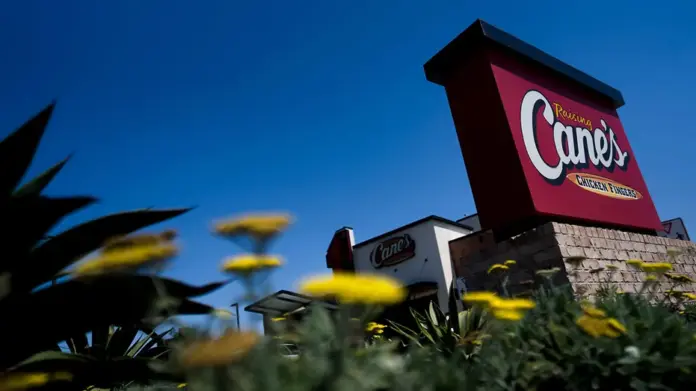Raising Cane, one of the adorable fast-food restaurants that provides patrons with a simple menu that includes crispy chicken fingers and the customary Cane Sauce is experiencing the most vigorous growth so far. By 2025, the chain intends to expand by almost 100 new restaurants, putting it further into a long-term aim of having bigger than 1,600 locations in the United States. The little idea started in Baton Rouge, Louisiana, is now contending to challenge the big firms in the American market of fast-casual eateries.
The Motion of Growth Strategy
The spokesperson of Raising Cane confirmed the aggressive chain rollout adding to Fox Business that the company has already opened up a number of new stores in Ohio, Kansas, and Connecticut in the last week alone. These new spots, namely, Ontario, Wichita and Wethersfield, are only the start. In the following months, other restaurants will be built in Las Vegas, Jacksonville and Normal (Illinois), Visalia (California) and Poway (California).
What makes the current expansion so noticeable is that it is a successor of a 2024, where Raising Cane’s opened 118 new stores, marking a new record. This has fueled since 2025 when the company focuses its attention on major markets and other famous destinations within the U.S. New stores under confirmation are at the SoFi Stadium in Los Angeles, and various stores in Fisherman Wharf and the University of Washington locations in San Francisco and Seattle respectively.
Also read: Amazon Invests £40 Billion in UK | A Bold Bet on Britain’s Digital Future
Not Aggressive Only, Calculated
Although the magnitude of expansion might sound fast, the company maintains that it is not being foolhardy. As per the company messages, Raising Cane has more than 300 sites under development. These are not only new buildings but also retrofits and flagship in high trafficked and high visibility locations. Its selected locations within close vicinity of universities, sports stadiums, and entertainment areas are a testimony to the fact that Cane will have the advantage of catering to demand of its target customers, young consumers who are loyal and socially active.
The Chicken Business
Raising Cane developed in 1996 with the help of one restaurant and an objective of doing one thing and doing it really well was what its founder, Todd Graves, had in mind. The name of the brand was actually derived after Graves Labrador Retriever (named Cane) and its cult following was established on the basis of word of mouth, unusual marketing, night-time service and use of high-quality ingredients.
The small menu of the company has been among its success secrets. It can be used to serve quickly and has an easier time in the kitchen with a good quality control. By having less products, Raising Cane would be able to concentrate on uniformity that has made its customers very satisfied with their services, hence brand loyalty.
Industry Timing and Competitive Landscape
Such an assertive growth is coming when other chicken-centric competitors such as Chick-fil-A, Popeyes, and KFC as well are spending a fortune on innovation and opening new shops. But Raising Cane is positioning itself as a specialist brand a company that competes successfully by sticking to what they are specialized in and not growing their menu and/or business too wide.
According to industry experts, the company has an attractive growth model at present owing to a wide customer base, healthy unit economics, and an increasingly recognizable brand both in the suburban and urban locations. Its format has been particularly successful in college towns and medium-sized cities,but it is moving on to key metropolis and iconographic locations.
Also read: Kroger Stores Closing 2025–2026: 60 Locations Set to Shut Down
Community and Brand Culture
Raising Cane has been getting credit besides its food. The brand has a reputation of community engagement, particularly in youth initiative, partnerships with schools as well as assistance during disaster. It also boasts of a light hearted, jovial work environment. The CEO, Todd Graves, has been very prominent and tends to personally interact with fans via social media and other engagements.
As part of the expansion, the company is also investing in job creation. Each new store employs approximately 75 to 100 people, meaning that the 100 new locations could create up to 10,000 new jobs nationwide by the end of the year.








